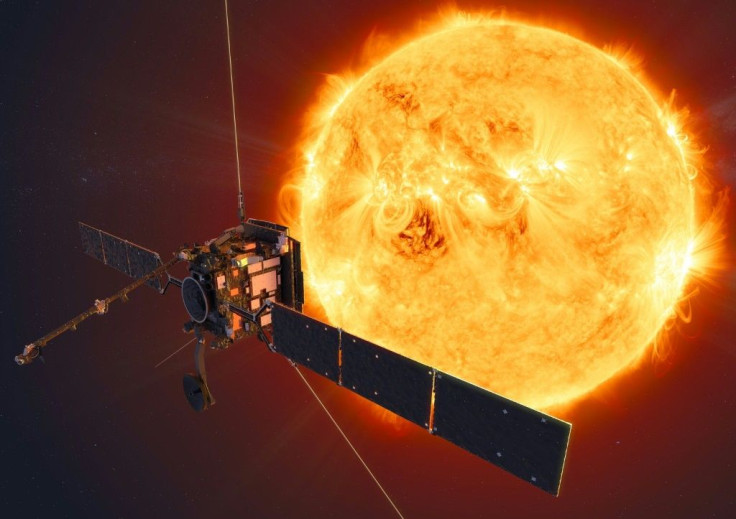Solar Orbiter Hit By Coronal Mass Ejection: 'Trying To Get The Orbiter's Attention'
KEY POINTS
- The Solar Orbiter got hit with a "large" CME
- It was on its way to perform a maneuver to get closer to the Sun
- It captured important data from when the storm hit
The Solar Orbiter is on a long journey to study the Sun from up close. It got a taste of the Sun's power as it just got hit with quite a strong coronal mass ejection (CME).
The CME was actually ejected from the Sun on Aug. 30, the European Space Agency (ESA) noted in a news release. The "large" event was facing Venus' direction, and it soon hit the Solar Orbiter just as the satellite moved closer to Venus for a gravity assist to get closer to the Sun.
"As if trying to get the orbiter's attention as it cozied up to another body in the Solar System, the Sun flung an enormous 'coronal mass ejection' straight at the spacecraft and planet just two days before their closest approach," the agency said.
The Solar Orbiter, however, is one tough cookie. In fact, it was built to endure and even measure such "violent outbursts" from the Sun, with its closest point planned for within Mercury's orbit. As such, it didn't garner "negative effects" from the impact. It was even able to take valuable measurements of the blast, and the gravity-assisted maneuver to bring it closer to the Sun was a success.
🛰🟠⤴️ Happening now! #SolarOrbiter is making a #VenusFlyby at a distance of about 6420 km to adjust its orbit around the #Sun. Further gravity assist flybys will boost its inclination to get better coverage of the Sun’s polar regions. #WeAreAllSolarOrbiters #ExploreFarther pic.twitter.com/Jo7u9NpWr5
— ESA's Solar Orbiter (@ESASolarOrbiter) September 4, 2022
"The close approach went exactly to plan, thanks to a great deal of planning from our colleagues in Flight Dynamics and the diligent care of the Flight Control Team," Jose-Luis Pellon-Bailon, Solar Orbiter operations manager, said, as per the ESA news release. "When it returns to the Sun, the spacecraft's closest approach will be about 4.5 million km closer than before."
But why is the Solar Orbiter's decade-long mission so important? As the first satellite that will be able to produce close-up views of the Sun's polar regions, it can hopefully answer some important questions about how the Sun operates. It will also be able to get valuable solar storm data that can't easily be garnered from Earth's vantage point.
When it got hit by the CME, for instance, some of its instruments were kept on, so it captured just how the environment changed the moment the CME arrived. One of the things it captured was an "increase in solar energetic particles," which are the high-energy particles that can actually impact spacecraft and astronauts, according to the agency.
As such, not only can the mission give scientists a better understanding of solar activity and help improve space weather prediction, but it is also crucial for future plans to send humanity further from Earth.
The ESA said it is important to have a clearer grasp of how human bodies, robots, communication systems, plants and animals are affected by space weather as we explore the Moon.

© Copyright IBTimes 2024. All rights reserved.






















